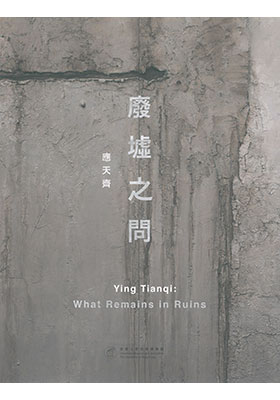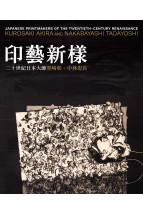Ying Tianqi 應天齊
What Remains in Ruins 廢墟之問
ISBN : 978-988-19024-5-0
Distributed for HKU Museum and Art Gallery 香港大學美術博物館
June 2017
60 pages, 8.25″ x 10.875″, color illustrations throughout
- HK$150.00
Also Available on
This catalogue is published to coincide with the UMAG exhibition Ying Tianqi: What Remains in Ruins, an exhibition featuring mixed-media work printed with water-soluble ink on paper, oils, a video projection and installation. Juxtaposed here for the first time are the renowned Chinese artist’s series—Traces of Centuries and Xidi Village—which present his reflections on the dismantling versus the preservation of historic places, with a focus on the ancient city of Wuhu and Xidi Village in Anhui province. A section of the exhibition examines the visual modes of ruins in an attempt to preserve the memory of deconstructed sites, along with the related physical and cultural heritage.
Ying Tianqi was born in 1949 in Wuhu, a city located in southeastern Anhui province. The public presentation of these artworks translates the artist’s nostalgia for and contemplation of two unique and emotionally charged ancient sites in Anhui province that are celebrated for their historic architecture. Within his visual language, images of ruins are embedded in abstract or geometric forms with textural surfaces and colours that inspire associations with architectural frames and fragments, as well as traces of bricks and tiles from Anhui’s architectural heritage.
Both an artist and activist, Ying Tianqi continues to be socially engaged in the process of heritage preservation and the reconstruction of the ancient city of Wuhu. In 2014, his heritage proposal to the government was centred around the concept of ‘Remains—Rebirth’. As part of this initiative, he mobilised thousands of villagers to retrieve bricks in order to rebuild his home town; through this action he directly questioned the widely accepted practice of re-building rather than conserving and restoring built environments. The UMAG exhibition visually and critically contemplates decay and reconstruction, bridging the past and the future.
此為配合香港大學美術博物館舉辦之《應天齊:廢墟之問》展覽而出版的圖錄。是次展覽首次展示中國著名藝術家應天齊的《世紀遺痕》和《西遞村》兩系列,作品包括水印版畫、混合媒介油畫、錄像投影和裝置。兩系列以安徽省蕪湖古城和西遞村為主題,貫注了他對文物建築和歷史古跡應拆卸抑或保育的反思。是次展覽有部分作品檢視了廢墟的視覺模式,試圖將被拆除的古城及物質文化遺產保存於記憶之中。
應天齊於一九四九年生於安徽省東南部的蕪湖市。其作品的公開展示正體現了他對安徽兩處以歷史建築聞名的遺跡的獨特情懷,懷古和省思兼備。在他的視覺語言中,廢墟的意象嵌入在抽象或幾何形制之中,加上表層顏料質感和色彩運用,這些都令人聯想到安徽歷史建築遺產的結構、碎片,以及磚瓦痕跡。
作為藝術家和社會活躍份子,應天齊積極投身於蕪湖的遺跡保育和古城重建工作。二零一四年,他向政府建議的保存文化遺跡的構思,以「遺存‧再生」的概念,發動數以千計的村民參與撿磚,以備家鄉重建之用,並以此行動質疑以重建取代保育這一廣為接受的做法。港大美術博物館舉辦是次展覽,對腐壞與重建的概念進行視覺和批判性的審思,連繫今古與未來。



